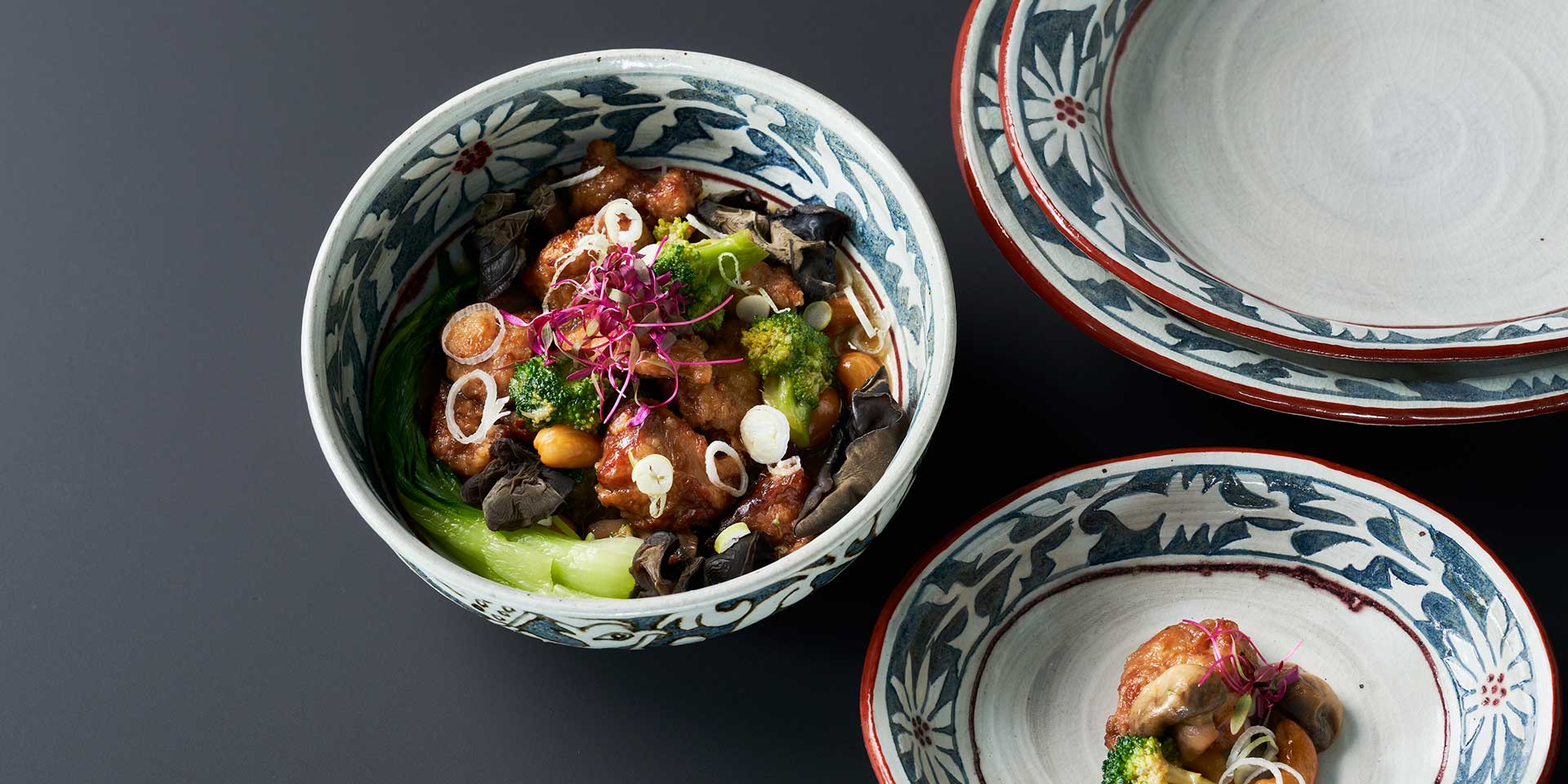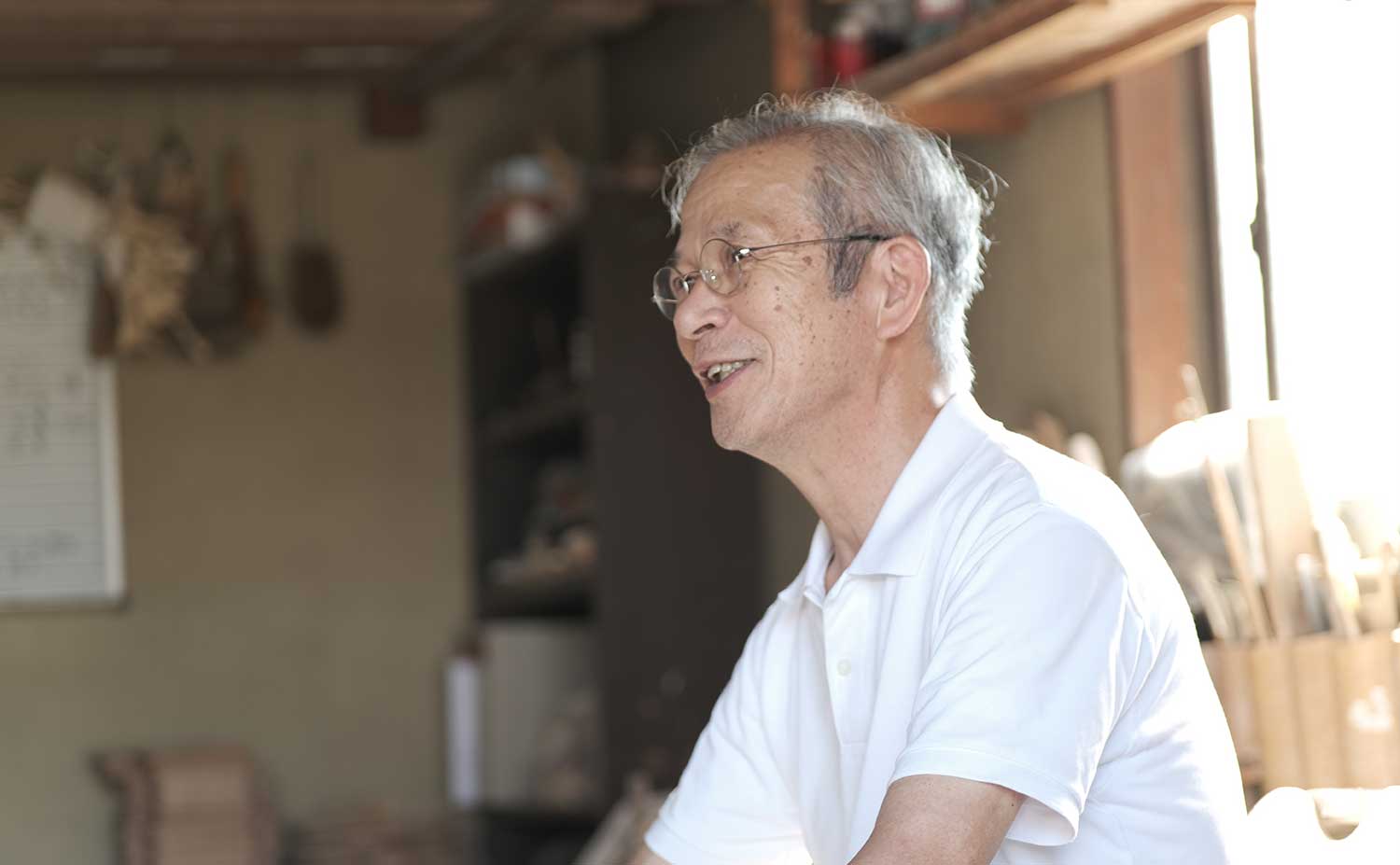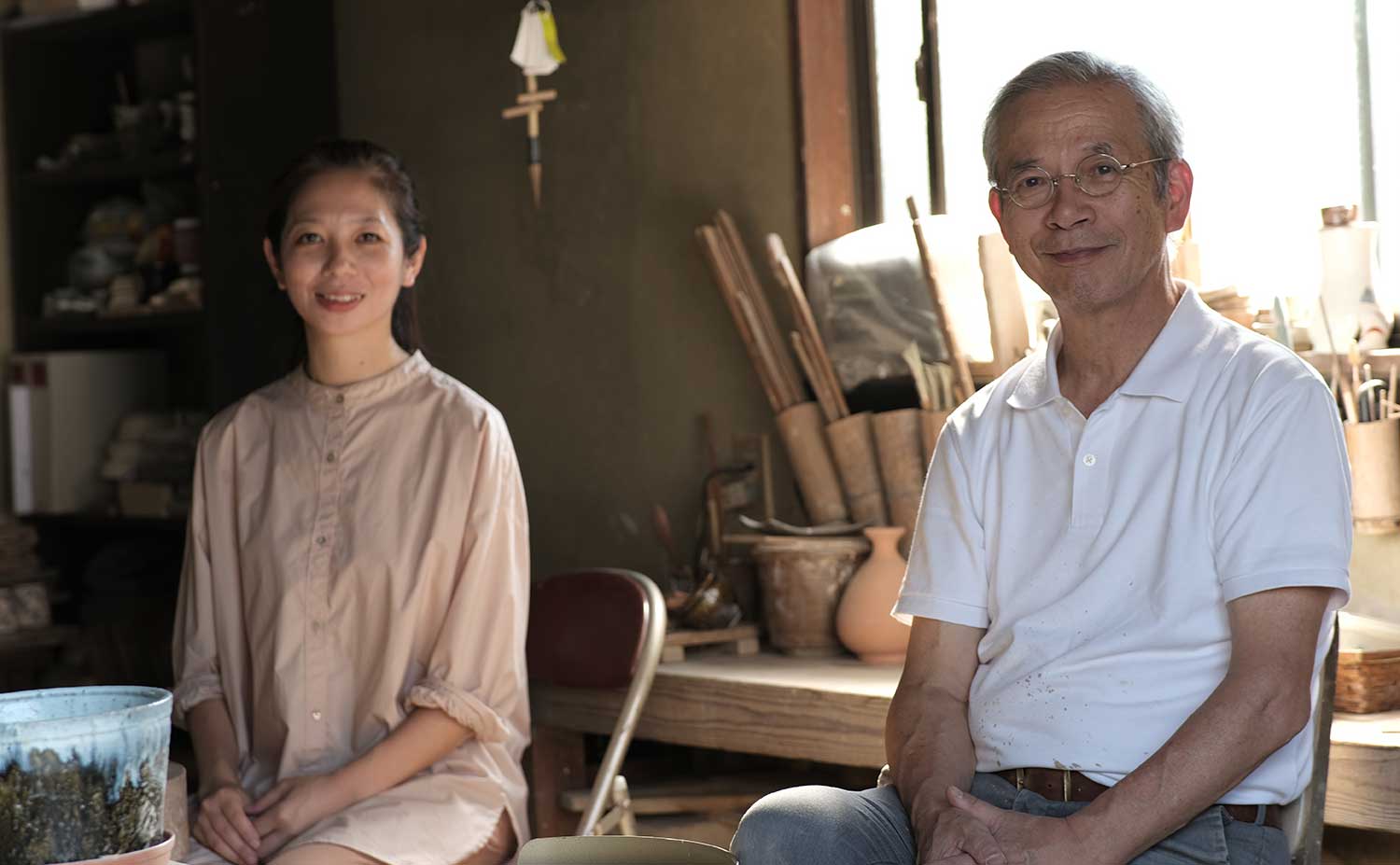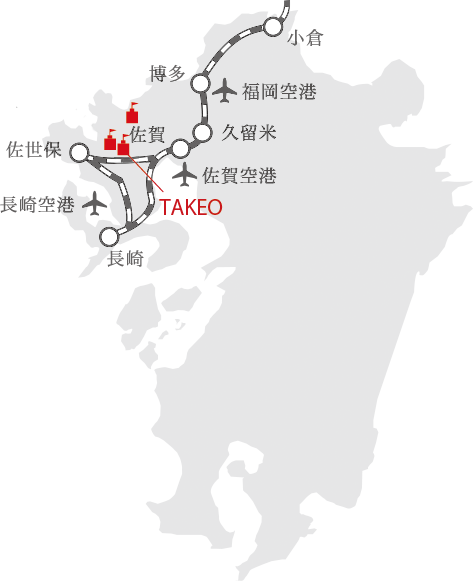KOUUNGAMA



Originally, most of the pottery made in the Takeo area had roots in Karatsu ware, and there was no such thing as “Takeo ware “. However, we, at Kouunama, have inherited the techniques of Karatsu ware and added our own original overglaze enamels to it. We call it “Takeo Ancient Karatsu Ware “.
We are currently firing mainly two types of pottery. One is the traditional simple earthenware of the Karatsu style. The other is a gorgeous type of pottery that is painted with overglaze enamels.
Since its establishment, we have always been consistent about carefully working on each step by hand, from kneading the clay and forming it with a potter’s wheel, to applying originally blended glaze made from natural domestic materials and firing it. We aim to create tableware that accompanies today’s lifestyles, while inheriting the traditional techniques of Ancient Takeo ware that has roots in Karatsu ware and has a history of more than 400 years.
We hope our tableware can be used daily at home.

Yasuo’s work: While inheriting the traditional techniques of Ancient Karatsu ware and Ancient Takeo ware, he has applied overglaze enamels, which were rarely seen on earthenware, to create a simple, yet gorgeous, and somewhat exotic style.
Kaden’s work :She pursues a style that has both the goodness of the folk art that the kiln owner values and the goodness of handcraft. Warmth can be felt from her works.
The pottery of Takeo ware were vessels that were deeply rooted in the life of this region. Our ancestors always made Takeo ware that fit with the lifestyles of each era. Some of them changed over time, but some have remained the same. In this day and age, we would like to make new Takeo ware from a different angle.
For example, Takeo ware’s main product was jars, which were essential for life in this area in the past. This is because the clay from Takeo has a spoilage prevention effect and so it was used to preserve a wide variety of things such as dried plums, miso, and even water and salt. Taking inspiration from this, we would like to challenge ourselves to use various kinds of clay to create vessels with high preservation effects that suit the local climate, culture, and lifestyle of the people.
Yes, we are. This place where we were born and raised is very important to us. The reason why we started having an interest in environmental issues is because we thought we wanted to pass on this rich nature and environment to the children of the next generation.
In the past few years, we have become more and more aware of the “Responsible Consumption and Production”, which is the 12th of the 17 goals of the SDGs (Sustainable Development Goals).
Our pottery is made from the clay of the countryside which is blessed by nature. We recycle the clay that is shaved off when shaping items. Once the clay has been fired, it will never return back into clay by itself, so we recycle chipped vessels and other pottery by grinding them into powder and mixing them with clay.
At present, we use three types of kilns for firing such as gas, electric, and ascending kilns. Particularly when we use ascending kilns, we tend to use the wood from thinned forests. We are making pottery every day with the hope of reducing the burden on the environment.
Kouungama opened in 1992.
The kiln produces mainly bowls, plates, teacups, and other tableware using the Karatsu method.
We strive to create “Takeo ceramic ware to accompany daily life” by combining simple earthenware “Karatsu” with gorgeous features such as overglaze enamels.
Kiln Owner: Yasuo YAMAGUCHI
| Yasuo YAMAGUCHI | |
|---|---|
| 1972-1984 | Consecutively selected for the Kyushu Yamaguchi Ceramics Exhibition |
| 1973 | Won 3rd prize at the Kyushu Yamaguchi Ceramics Exhibition |
| 1977 | Won NBC prize at the Kyushu Yamaguchi Ceramics Exhibition |
| 1972-1980 | Consecutively selected for the Seibu Craft Exhibition |
| 1980 | Won 1st prize at the Japan Folk Art Exhibition |
| 1981 | Accepted at the Japan Folk Art Exhibition |
| 1982 | Won Encouragement Award at the Japan Folk Art Exhibition |
| 1984 | Won Prefectural Federation of Chambers of Commerce and Industry Award at the Kyushu Yamaguchi Ceramics Exhibition |
| 1986 | Won Excellence Award at the Japan Folk Art Exhibition |
| After these, they stopped all activities as artists and shifted to "making tableware for daily life”. |
| Kaden | |
|---|---|
| Grew up | Born as the second daughter of kiln owner Yasuo Yamaguchi. Grew up watching the work of her parents as potters. |
| Work | Moved to Tokyo for work. |
| After | After she learned how to sell pottery at an Arita ware trading company, she took charge of sales at Kouungama. While traveling around the country for exhibitions and other events, she became fascinated with the handicrafts of various professions and through her encounters with customers, thought about the question, "What is it to create something on your own?". |
| Became an apprentice to the kiln owner Yasuo Yamaguchi. She is learning and striving every day to create tableware that enriches people’s lives simply by using them. |

| Company Name | KOUUNGAMA |
|---|---|
| President | Yasuo YAMAGUCHI |
| Address | 13649 Umeno, Takeuchi-cho, Takeo city, Saga, 849-2341, JAPAN |
| Tel | +81-954-27-2745 |
| Official website | https://kouungama.jp/ |